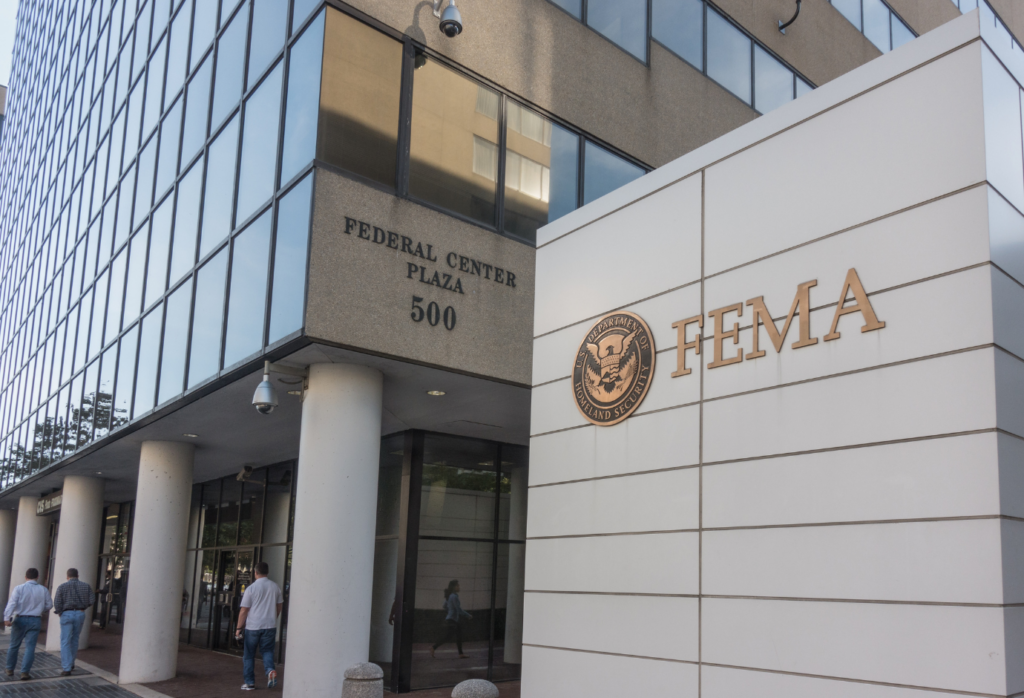Almost a month after US President Donald Trump announced a five-day-a-week return-to-office mandate for all federal employees — chaos has ensued.
As the president continues to cut the size of the federal workforce and order agencies to lay off employees, hundreds of thousands are being made to return to offices — without adequate workspace for everyone to actually work.
This week, The Washington Post reported that federal employees were turning up to offices and finding there weren’t enough desks available for them to work from. At the Federal Emergency Management Agency (FEMA), the branch which coordinates assistance to those affected by disasters, workers are being forced to “share workstations on a rotating basis,” according to an internal guideline released last week.
“Supervisors will resolve workplace availability conflicts using the following criteria in the order listed below,” the guidelines stated before listing the following: “Full-time employment status,” followed by “seniority”, then “pay-scale criteria.”
If the conflict is not yet settled by these measures, supervisors are advised to do the sixth and final recommendation on the list: “flip a coin.”
Those who lose out on a temporary office desk are forced to work in either a large auditorium that has no internet access, or in an open area of its Washington DC headquarters where there are no desks.
“It’s just a big open space, which is problematic if you have a job that requires you to do anything confidential,” one anonymous FEMA employee said.
“People are miserable,” another FEMA employee who spoke to the Post anonymously said. “Everybody is miserable and anxious. It’s palpable.”
As stated by the guidance memo shared with FEMA staff, the “minimum requirements for an employee workstation” contain just four items: a work surface, a chair, a power source and an internet or WiFi connection.
Over at the US Navy Department, one Virginia-based employee reported having to return to office this week only to be separated from colleagues by dozens of miles due to shortage of space.
“I’m making a 15-minute drive to get paperwork routed,” he said, explaining how his team have been spread across four different buildings. “Some people are making a 45-minute drive.”
The employee’s wife, who works for a different Navy command within the Navy Department, is jostling among 40 other workers with only 14 working desks available to them. According to the employee, his wife takes turns at the desks with her colleagues and spends the other hours ‘killing time and chatting in the halls.’
“They’re trying to say she can sit in the auditorium and do any work that doesn’t require the internet,” the employee said, “which is zero.”
Other federal workers are struggling to even find a car park space at offices sites, with no exceptions made for disabled contractors with handicap placards. One worker for the Department of Homeland Security (DHS) claimed that the car park of its headquarters in Southeast DC was already full by 8:15am.
The DHS released a statement, saying that the department’s parking policy “aligns with pre-pandemic guidelines, which did not permit contractor parking,” and that “this policy is being reintroduced to prioritise parking for federal employees.”
A lack of parking facilities to accommodate the wave of returning workers to the office has also been an issue at the Navy facility in Washington DC’s Navy Yard area, where fewer than 5,000 car park spots are available for the almost 17,000 workers. While the Navy is scrambling get access to other local parking lots, employees have been encouraged to take public transport.
Last Thursday, Trump’s administration continued its onslaught against federal workers, directing agency heads to fire most trial and probationary staff, a decision that could affect up to 200,000 employees. Shortly after the announcement, thousands of workers were laid off in messages delivered through prerecorded videos and on group calls, according to the Post, with some being ordered to leave the building within thirty minutes.
Trump’s efforts to fire hundreds of federal employees through Elon Musk‘s Department of Government Efficiency team has been causing wide-spread chaos and confusion across the country. Some workers have been laid off, only to be notified days later that their terminations have been rescinded.
After a series of terminations were announced and then reversed at the National Nuclear Security Administration, its deputy division director Rob Plonski posted a warning on LinkedIn.
“This is a pivotal moment. We must decide whether we are truly committed to leading on the world stage or if we are content with undermining the very systems that secure our nation’s future,” Plonski wrote. “Cutting the federal workforce responsible for these functions may be seen as reckless at best and adversarily opportunistic at worst.”
In the final quarter of last year, the Q4 Flex Index Report revealed a clear shift in how US companies view office work. Structured hybrid models, where employees follow set office schedules were found to be the preferred model for 43 per cent of organisations.

